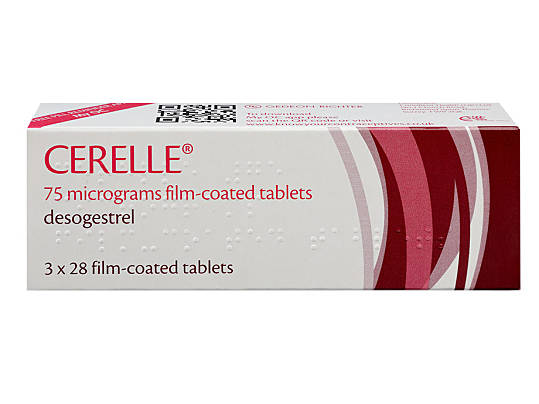What to Know About the Contraceptive Coil

Medically reviewed by
Dr Kathryn BasfordLast reviewed: 09 May 2019
What are the IUD and the IUS?

Key takeaways
There are two types of contraceptive coil: the copper coil (IUD) and the hormonal coil (IUS)
All coils are over 99% effective at preventing pregnancy when fitted correctly
A coil can be taken out at any time by a doctor or nurse, and it’s possible to get pregnant as soon as it’s removed

No results found.
Please check your spelling or try another treatment name.
What is the contraceptive coil?
The contraceptive coil is a plastic, T-shaped device fitted in the vagina by a doctor or nurse. The coil gives long-term protection against pregnancy.
What’s the difference between an IUD and an IUS?
There are two main types of coil:
- the intrauterine device (IUD)– this type of coil is coated with copper and is also called a ‘copper coil’
- the intrauterine system (IUS) – this type of coil releases the hormone progesterone and is also called the ‘hormonal coil’
The IUD releases copper, which means sperm cannot survive for very long in the womb. It also changes the cervical mucus at the entrance of the womb to stop sperm from getting in.
The IUS releases progesterone, which changes your cervical mucus in the same way. Progesterone may also stop your ovaries releasing any eggs (ovulating).
IUDs can last for 5 or 10 years, and an IUS can last for 3 or 5 years, depending on the brand used. Both types of coil are very effective at stopping pregnancy.
There are many different brands of IUD. Mirena and Jaydess are the brands of IUS used in the UK.
What are the advantages and disadvantages of contraceptive coils?
Advantages:
- IUDs work straight away once fitted. An IUS can work straight away but this depends on where in your menstrual cycle you are
- You do not have to think about contraception every time you have sex
- Most women can use them
- It’s possible to get pregnant as soon as the coil is removed
- An IUD can be used for emergency contraception (as an alternative to the morning after pill) if it’s fitted up to 5 days after unprotected sex
Disadvantages:
- They do not protect against sexually transmitted infections (STIs) so you need to use other protection, like condoms, as well
- If you get an infection with a coil in place, there’s more chance of this becoming a serious infection (called pelvic inflammatory disease)
- You need to check regularly that your coil is in place. Your doctor or nurse can help you learn how to do this
- Your coil may slip out of place or your womb may force it out. This is not common, and is more likely to happen soon after a coil is fitted. Never try to put a coil back in place by yourself
- Both types of coil can have side effects
What are the advantages and disadvantages of an IUD?
Advantages:
- It can last longer than the IUS
- It does not cause any hormonal side effects
- It does not interact with other medications
- It works straight away once fitted
- It can be used as emergency contraception in the first 5 days after unprotected sex
Disadvantages:
- It may mean you get heavier or more painful periods
- It may not be suitable for you if you have cancer of the womb or cervical cancer, and it may not be suitable if you have ever had one of these cancers in the past, or a history of liver cancer
- It is not suitable if you have a copper allergy
What are the advantages and disadvantages of an IUS?
Advantages:
- It can make your periods much lighter or less painful
- It may be used to treat endometriosis and heavy periods
- Even though it’s a hormonal contraceptive, it can be used during breastfeeding
- It may be a good option if you cannot take oestrogen, which is one of the hormones in the combined contraceptive pill
Disadvantages:
- Side effects are possible, but usually disappear after the first 3 to 6 months. These include breast tenderness, acne, and mood changes
- There may be medical reasons why it might not be safe for you compared to the IUD, for example if you’ve had breast cancer
- Some women find that their periods stop altogether or become irregular, which may not suit them
How do I choose which type of coil is right for me?
Which coil you can choose will be based on a combination of your medical history, a doctor’s advice, and your own preference.
Factors to consider include:
- How long you want the coil to be effective for
- Whether you’re able to use hormonal contraception
- If you have other conditions that the coil could help with, for example heavy periods or endometriosis
- Both coils are over 99% effective
How effective is the coil?
The coil is over 99% effective at preventing pregnancy. Once an IUD is fitted, it works straight away. An IUS can work immediately but it depends on where you are in your cycle.
Coils always have ‘perfect use’, which means that once they’re fitted correctly, they’re always at maximum effectiveness. The only thing you need to do is regularly check that it’s in place.
In comparison, contraceptives like the pill are less effective in actual use than coils. This is because people do not always take them perfectly. The only other contraceptive with perfect use like the coil is the contraceptive implant.
What makes the coil more effective?
Once you’ve had a coil fitted correctly by a doctor or nurse there’s nothing that makes it more effective, except checking regularly that it’s in place, or using an additional contraceptive like a condom.
What makes the coil less effective?
The coil would only become less effective if it moves out of place or comes out, or if it’s not changed on time.
There’s a higher risk of your womb forcing the coil out if you’re under 20 years old, if you’ve never been pregnant, if your womb has forced out a coil before, or if you have fibroids (growths on the womb).
It’s a good idea to keep a record of when your coil was inserted, so that you know when it is due to be changed.
Who can use the coil?
The coil can be used by a range of women, even if they’re under 16. If you are under 16, your doctor or nurse will not tell a parent or carer as long as they’re sure that you fully understand all the information you’ve been given and the choices that you’re making.
You cannot get any type of coil fitted if you’re pregnant, you think that you could be pregnant, or if you’ve had a baby in the last 4 weeks. There are also some conditions that affect the womb like fibroids (growths on the womb) that might mean that the coil is less suitable for you.
If you have any signs of infection, or any unexplained bleeding, these are symptoms that the doctor or nurse will want to look into more before inserting a coil. You can’t use a coil if you have a pelvic infection, vaginal inflammation or an STI.
You cannot use the IUD if you have:
- a copper allergy
- cancer of the womb or cervical cancer, and it may not be suitable if you have ever had one of these cancers in the past, or a history of liver cancer
The IUD might also be less suitable for you if you have heavy or irregular periods, because it might make these symptoms worse.
You cannot use the IUS if you have:
- allergies to any of the components in the IUS
- breast cancer, cancer of the womb or cervical cancer, and it may not be suitable if you have ever had one of these cancers in the past, or you have a history of liver cancer
How do you get the coil?
Both types of contraceptive coil are available for free on the NHS (even if you’re under 16).
You can get the coil at:
- GP surgeries
- contraception clinics
- sexual-health or GUM (genitourinary medicine) clinic
Whether you can get a coil fitted or not depends on if the coil is right for you. Your GP or nurse will check this before they recommend you have a coil fitted.
Can you get side effects from the coil?
Side effects can happen with most treatments, but not everyone gets them.
Side effects of the IUD
The most common is heavier and more painful periods. This is even more likely if you normally have heavy and painful periods.
Other side effects are not common but include:
- cramps
- backache
- change in vaginal discharge
Side effects of the IUS
The most common are:
- headaches
- feeling sick (nausea)
- mood swings
- any acne you already have getting worse
- breast tenderness
- irregular bleeding
These side effects are most common during the first 3 to 6 months, and usually disappear after a few months.
An uncommon side effect of the IUS is ovarian cysts. These are not harmful but can sometimes cause pain. They’ll often disappear on their own without you knowing about them.
How do I manage these side effects?
- Feeling sick – eat small portions of light meals each day and drink plenty of water. Avoid fatty, fried, and strong-smelling foods
- Backache, headache, or cramps – if you can take them, try a simple painkiller like paracetamol to help relieve pain
- Mood swings – keep to a regular sleep pattern, and make sure you get enough sleep. This can help you manage mood swings and keep your stress levels low
- Acne – some acne treatments are available from pharmacies or from a doctor if your symptoms are bad or they impact your life
- Irregular bleeding – speak to a doctor if you have irregular bleeding that lasts for a long time, or an unusual vaginal discharge
Is the coil safe?
The coil is a safe method of contraception, but it does have a few rare health complications.
Pelvic infection
You should speak to your doctor if you get signs of a possible infection soon after your coil is fitted (most likely in the first 20 days). These signs could include:
- a smelly discharge
- high temperature
- pain just below your stomach
Damage to the womb
In rare cases, fitting the coil can damage your womb by making a small hole in it. The risk is very low if an experienced doctor or nurse is fitting it. This can often cause no symptoms but see your doctor if you get any pain after your coil is fitted.
Ectopic pregnancy
There’s a small risk of an ectopic pregnancy (pregnancy happening outside the womb) if you get pregnant on the coil.
It’s possible to get a negative pregnancy-test result when you have an ectopic pregnancy. If you have any of the following symptoms, and think you may be pregnant, go to your nearest A&E department.
- A sudden, sharp, intense pain in your stomach
- Feeling very dizzy or sick
- Fainting
- Looking very pale
- A pain in your shoulder tip
- Vaginal bleeding that’s different from your normal period. It may be watery or dark brown in colour
Are there any myths about the contraceptive coil?
The coil is one of the most effective methods of contraception, but there are some myths surrounding it.
- Abortion. The coil does not work by causing abortions. It slows the movement of sperm and prevents fertilisation by releasing copper or the hormone progesterone
- Weight gain. There is no evidence that using either the IUD or IUS will affect your weight
- It stops working after a while. Coils keep working at the same level until it’s time to change them. The effectiveness doesn’t go down with the number of years a coil is used for
- Infertility. Coils should not affect fertility and you can get pregnant as soon as your coil is removed. Long-term use of a coil isn’t related to infertility
- Ectopic pregnancy or miscarriage after the coil is removed. The coil does not cause a higher chance of having an ectopic pregnancy or miscarriage after it’s been taken out
- Moving or travelling in the body. Coils never travel to any other parts of the body. Your womb may force the coil out soon after it’s fitted, but this is not common
- Copper toxicity. The copper in the coil is not released into your bloodstream and unless you have an allergy to copper, it should not cause any health problems
- Other health risks. There’s no evidence that the coil causes cancer, birth defects, or STIs
What if the coil falls out?
Signs that your coil might have fallen out include:
- the string being out of place, shorter than usual, or missing
- heavy bleeding, bad cramps, or discharge
Your coil is more likely to fall out if you:
- are still recovering from giving birth
- are a teenager
- have had an abortion in the past
If you think your coil has fallen out:
- see a doctor or nurse to who can check for you
- use extra contraception until you are sure the coil is in the correct position

Dr Kathryn Basford is a qualified GP who works as a GP in London, as well as with ZAVA. She graduated from the University of Manchester and completed her GP training through Whipps Cross Hospital in London.
Meet our doctorsLast reviewed: 09 May 2019
-
Bayer plc (2018). Summary of Product Characteristics, Mirena. [online] Available at: https://www.medicines.org.uk/emc/product/1132/smpc [accessed 9th May 2019].
-
Bayer plc (2017). Summary of Product Characteristics, Jaydess. [online] Available at:https://www.medicines.org.uk/emc/product/5297/ [accessed 8th May 2019].
-
IPPF (2019). Myths and facts about... the Intra-Uterine device (IUD). [online] Available at: https://www.ippf.org/blogs/myths-and-facts-about-intra-uterine-devices [accessed 9th May 2019].
-
NHS (2018). Intrauterine device (IUD). [online] Available at: https://www.nhs.uk/conditions/contraception/iud-coil/ [accessed 9th May 2019].
-
NHS (2018). Intrauterine system (IUS). [online] Available at: https://www.nhs.uk/conditions/contraception/ius-intrauterine-system/ [accessed 9th May 2019].
Contraceptive pills are a reliable way of reducing your risk of getting pregnant from sex. ZAVA offers most common brands of pill, so you can order your preferred brand by visiting our contraceptive pill service page.












